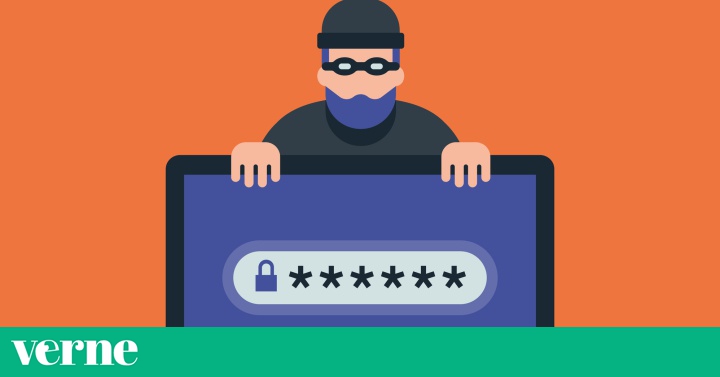For many illustrators, Instagram has become a showcase for their projects thanks to which thousands of people can see their work. However, for a few weeks, many of these windows have been “kidnapped”: some illustrators and photographers have lost their accounts at the hands of hackers who, after taking away their Instagram pages, they ask for money or their account numbers to get them back.
The illustrator Ana Galvañ, the artistic collective Two mice, Mr. Garcia, Valerio Vidali, Matu Santamaria, Sergi Delgado, PowerPaola O DoritoChan are some of the illustrators who, in recent weeks, have seen their Instagram accounts vanish. “I am lucky that I am not influencer and I do not live from the networks, although [Instagram] it was a great showcase ”, Ana Galvañ tells Verne by phone. After losing her page on December 10, this illustrator and comic book author has resigned and has opened a new. “Before I had 29,000 followers, but with the change of Instagram algorithm, which has reduced the impact of publications, it will be almost impossible to return to those numbers,” he laments.
Although with small variations, all those affected with whom Verne contacted refer to a modus operandi similar among account thieves: they contact illustrators – sometimes through Instagram, others through email or even WhatsApp – making up an excuse to make them click on a link: that they are going to verify their account, that This will be eliminated due to a copyright infringement, who want to order an illustration or image like the one that can be seen through said link … Through the link, a series of private data is requested that hackers use to access the user’s account. Sometimes they use a fake Instagram login page: when trying to register, we are only providing the hijacker with our username and password.
For some workers such as illustrators or photographers, Instagram serves as a portfolio to publicize their work, contact new clients and even, in some cases, sell works directly through online stores. Many of them, out of fear of losing their account, or a client, end up falling into the trap. The photographer Thais Varela He also suffered a kidnapping on December 5, and told his case in an Instagram video that you can see below:
Varela explains that, in his case, the kidnappers posed as a client who wanted a specific photograph. Instead of attaching it, they included a link that, when clicked, asked Varela to log into Instagram. That Instagram login window was fake: five minutes after entering your details, the hackers They changed the name of their account, the access email and the telephone number linked to it.
And why does a hacker want an illustrator’s account?
Although this kidnapping practice has intensified in recent weeks, some photographers and illustrators experienced similar episodes months ago. In April, the comic book author Sergio Mora he also lost his account with a similar hijacking. In your case, according to account by email to Verne, they contacted him on WhatsApp. “I got a message supposedly from Facebook, I didn’t realize [de que era falso] and I answered ”, he explains. As the cartoonist believes, they were trying to access his bank details.
Ana Galvañ, for her part, has no doubts that what the kidnappers wanted was access to her bank account. “They have contacted me through two different phones by WhatsApp, they communicate with me in English and have asked me for the IBAN of my account,” he explains. Galvañ has facilitated Verne screenshots of some of the messages you have received.
In the case of the photographer Thais Varela, as she explains in her video, the kidnappers asked for a certain amount of money to recover the account. In case of not paying, they threatened to delete the account or sell it to another interested person. Varela explains that in his case, due to fear of losing “his seven-year job,” he even paid. The kidnappers also did not return the account after payment. Varela has not specified what is the amount that the kidnappers demanded.
However, not all account thieves are asking for money or bank details. Denis Galocha and Cristina Barrientos, artists del colectivo Two Mice, count to Verne by phone that the kidnappers did not ask for any kind of ransom. Instead, they are using their account, with almost 11,000 followers, to mislead more users: “He wrote us a profile by private message posing as an official Instagram account telling us that he wanted to verify our account. When we tried to access the link they sent us, we lost it ”, he explains. According to several captures that have facilitated Verne, his hijacked profile has changed its name and profile picture several times. In one of those changes, he has posed as an account similar to the one used to deceive you. “They are writing to our fans and trying to do the same to them that they have done to us,” they warn.
How to prevent an account hijacking and what to do if it occurs
Verne He has contacted Instagram to find out the guidelines to avoid this type of kidnapping. Through the advice of some of those affected and the indications of the platform, which has a section dedicated to account hijacking in its help panel, we have prepared some recommendations:
- Ignore suspicious messages. Instagram never contacts users through the application’s private messages and, if it does so by email, it never asks for user account data or passwords. In the event that you receive a suspicious message, ignore it and, above all, do not provide personal data.
- Check the access address to Instagram. Many of the hijackers turn to a classic from the phishing: they create a fraudulent page that mimics the Instagram login page in which, by entering a username and password, we provide this information to the hijackers. What they cannot falsify is the access address to Instagram (Instagram.com): if the url has another name, do not enter any data.
- Activate 2-Step Verification. This security feature, which is also available on other platforms (such as Twitter or Gmail, for example), requires an additional verification code to enter the account, in addition to the password. This code reaches the account owner’s phone via SMS and, without it, it is not possible to log in. You can find more information in this link.
And if your account has already been hijacked …
- Do not agree to the requests of the kidnappers. The photographer Thais Valera assures that she agreed to pay the kidnappers and that they did not return her account. Also, if they succeed, they will continue to hijack more accounts.
- Attentive to the mail. The hijackers usually change the email account that the user uses to log in, but when it is modified, an email must reach the user warning them. If other information has not yet changed, such as the password, that same email allows you to cancel the change.
- Notify Instagram. If you have another Instagram account or have created a new one after the kidnapping, you can use the option to report a problem. To access this option, go to the main menu (the three lines in the upper right corner), select “settings”, then “help” and then “report a problem”. In the text box that will appear, write that your previous account (includes your name) has been hacked, who have modified their username, access email and password, and leave a new contact email. This can also be done through the account of friends or acquaintances. Afterwards, Instagram will contact you to verify your identity, requesting additional information: a photograph, answering some questions… Once you have provided that information, you will receive specific instructions to recover the account. This process can be slow: Cristina Barrientos and Denis Galocha, from Twee Muizen, say that they did this process the same day that their account was hijacked, on December 9. This December 16 they still had no news from Instagram.
* You can also follow us on Instagram and Flipboard. Don’t miss out on the best of Verne!
– .


